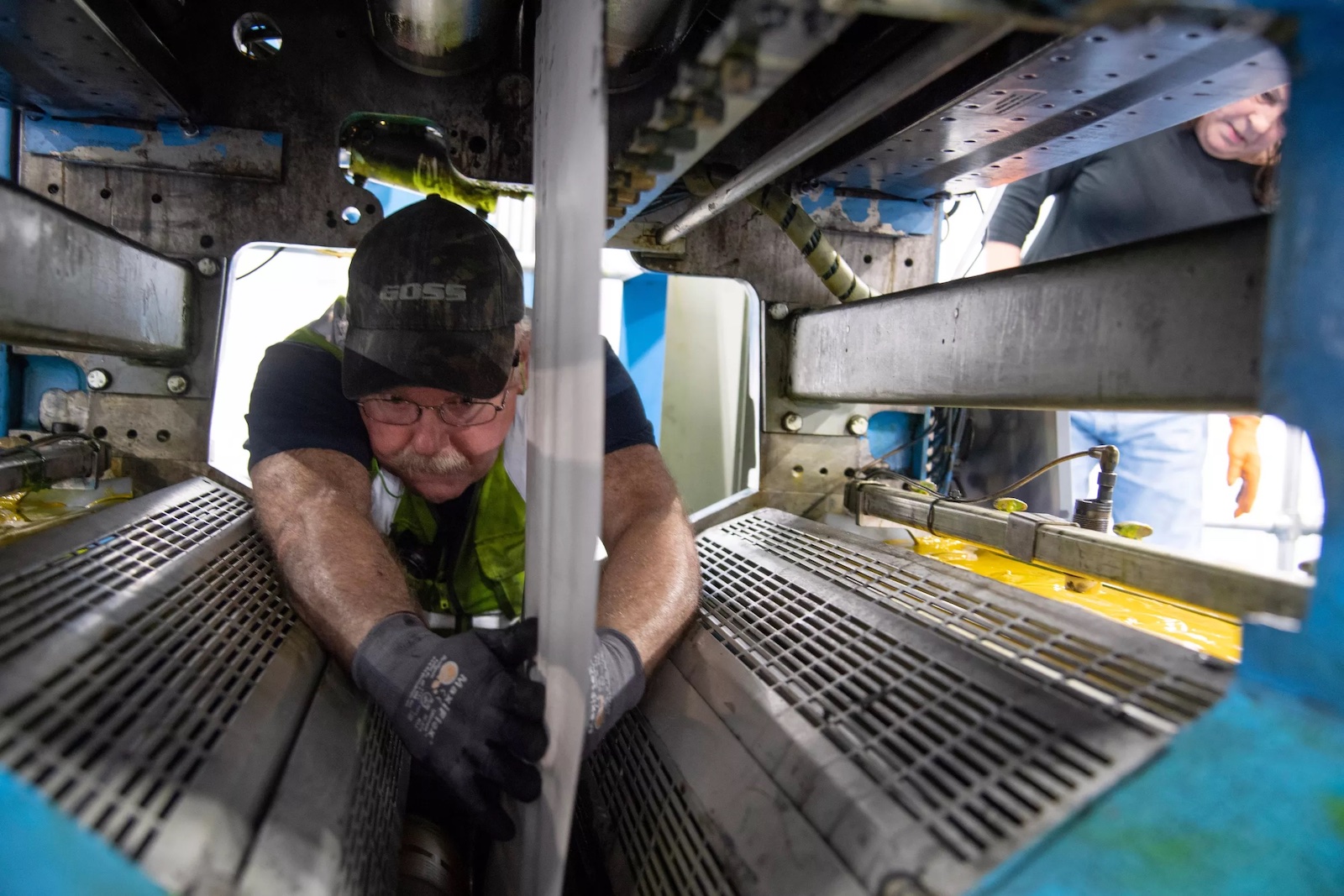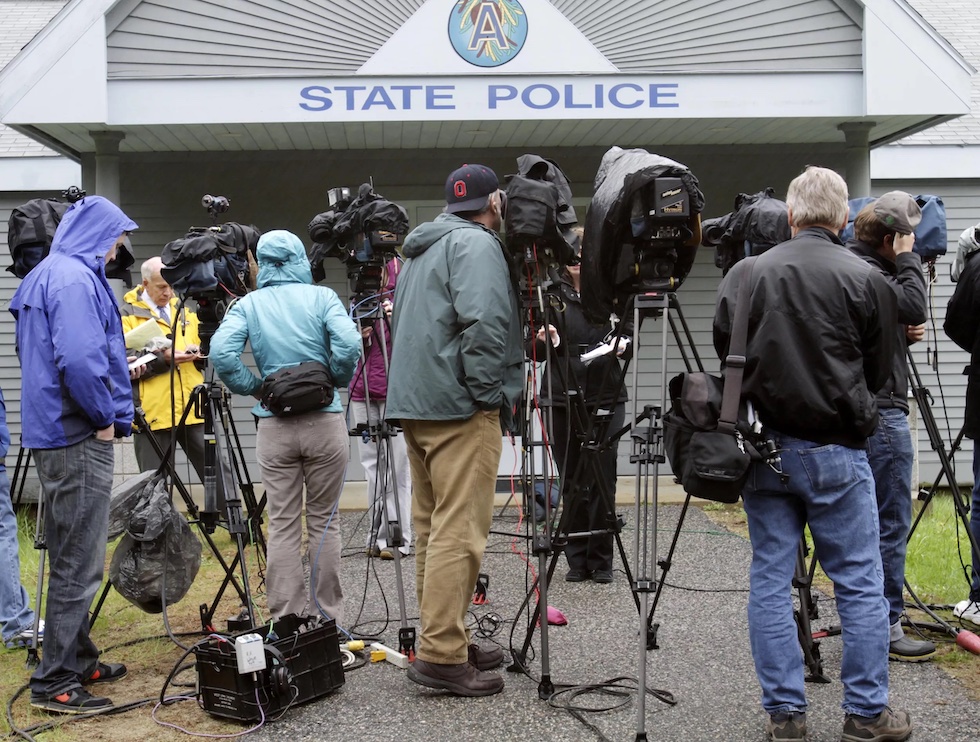The State of Newspapers
Sun., June 12, 2022
A pressman pulls a copy of the final edition of Denver’s Rocky Mountain News off the press on Feb. 26, 2009. The paper was forced to close for economic reasons despite winning four Pulitzer Prizes over its final 10 years. (David Zalubowski/Associated Press)
Once upon a time, newspapers were the first, best source of news for the public.
In many cities, people had a choice of newspapers. Some arrived first thing in the morning. Some were delivered in the afternoon — just in time for dad to get home from work, plop into his easy chair and peruse the previous day's box scores.
That's not the case anymore. Newspapers have seen an alarming shrinkage of their revenue, their resources, their staff, and their readership. And while smaller, local papers are hit especially hard by this, it is by no means limited to certain areas. This is a nationwide problem.
How Did We Get Here?
You often hear newspapers “were killed by the internet.” That’s an overstatement, but any truth there is to it is almost certainly different than most might expect.
So what happened? In a word, advertising. Ecommerce. Online shopping. Whatever you want to call it, that is what hurt newspapers in the biggest way. That’s because the largest amount of advertising in local newspapers has always been by local businesses, particularly local retail stores, and especially big-box stores like Sears, or Sports Authority or Toys R Us or Woolworth’s or Kmart. Those stores aren’t coming back. Online shopping, Amazon – in particular – helped shutter most of them, with COVID finishing the job.
The local journalism that was once paid for primarily by both big and small businesses through their advertisements in our newspaper is now paid for primarily by our subscribers. No one’s getting rich from these higher subscription prices. In fact, there is a still a fairly significant gap this newspaper needs to overcome if we are going to continue to publish the kind of newspaper you are reading today. But our readers have already helped more than you all might even know.
Is It Just a Revenue Problem?
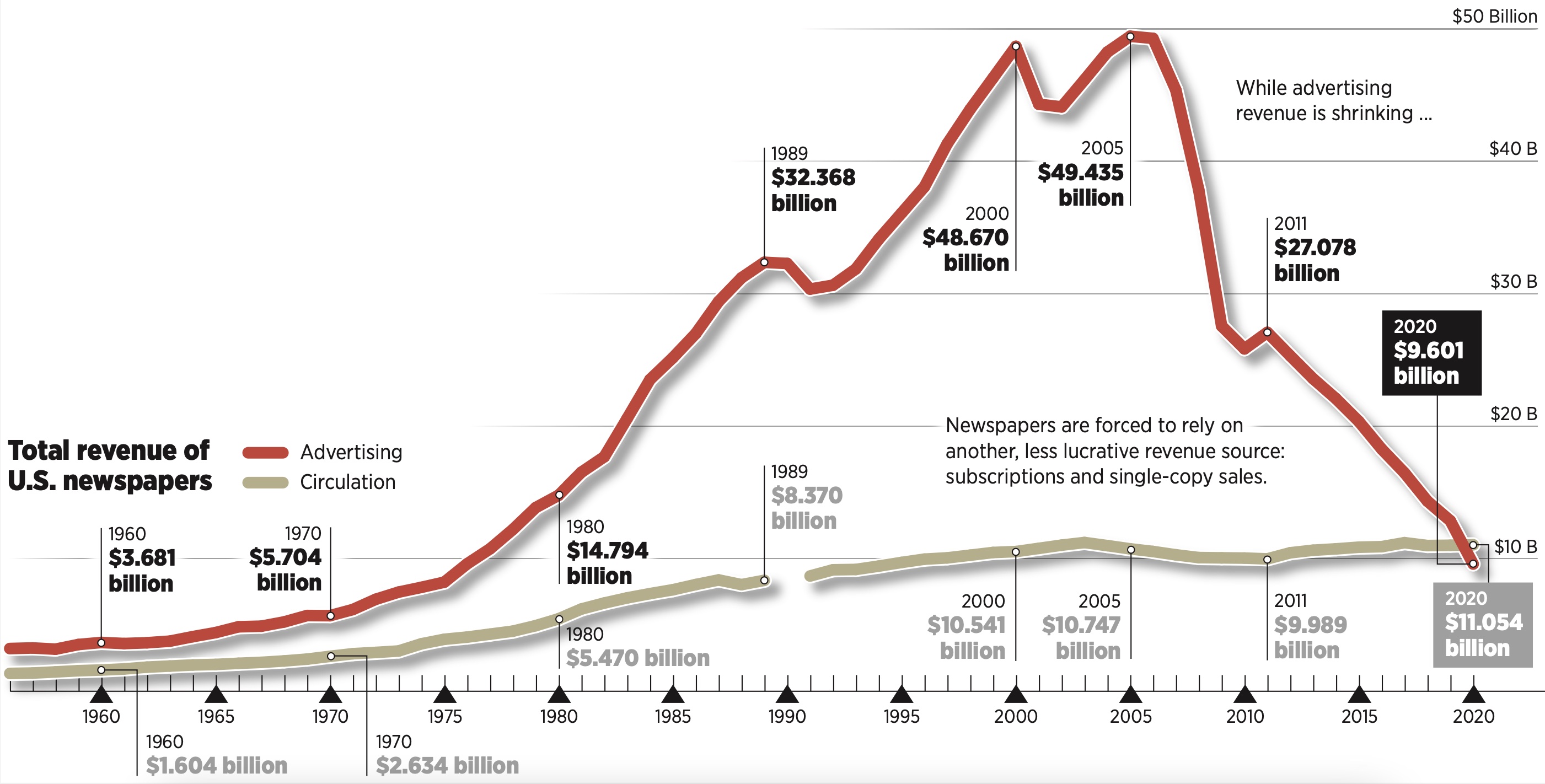
It would be easy to blame shrinking newspaper revenues on the movement of readers and advertisers to online platforms. But in truth, it’s a lot more complicated than that.
Newspapers made a lot of their money on classified advertising — think help-wanted ads, real estate ads and so on — and on the multiple full pages of ads retail outlets would buy. These paid the salaries for a lot of reporters and editors — and, yes, in some cases made wealthy people out of publishers and owners.
Newspapers have succeeded in gaining a larger share of the digital ad market. But digital ads pay a fraction of what print ads used to bring in. Advertising revenue — upon which the industry was built — has dropped by more than 80% since its peak in 2005.
The result has been a total collapse of newspapers as a business and the companies that own them.
How Newsrooms Have Changed
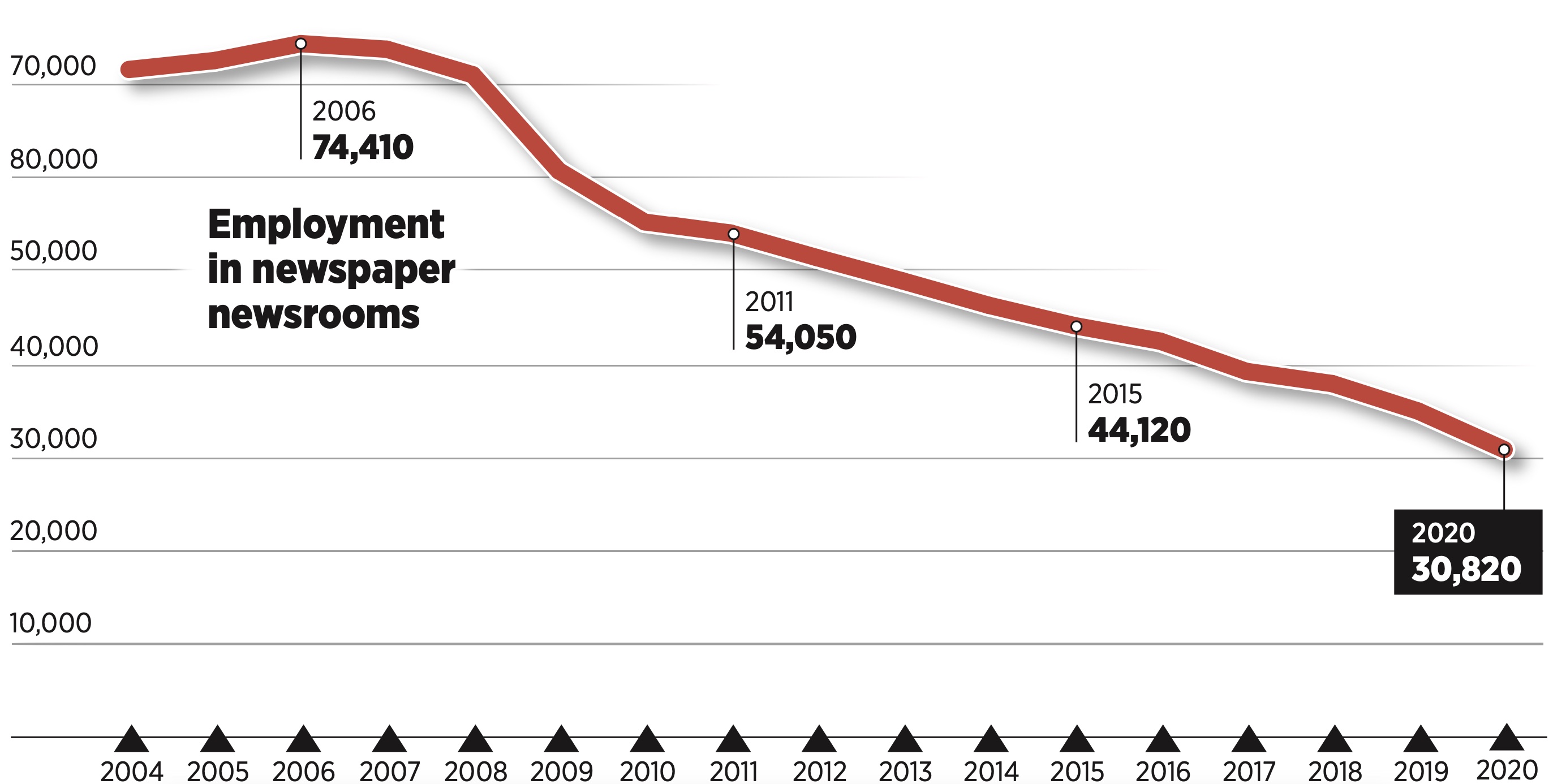
The number of people employed in newspaper newsrooms has shrunk nearly 60% over the past 17 years. This means fewer reporters, fewer photographers and fewer editors. This means less coverage of local issues, businesses and sports. In some cases, it means a paper might reduce its print schedule to only three or four issues a week.
In some cases, newspaper groups have laid off editors and designers and sent news production duties to regional centers or “hubs,” where papers are assembled by staffers who don’t live or work in the communities where their papers are located. Some newspapers have even outsourced this work to centers outside the U.S.
The Toll of the Pandemic
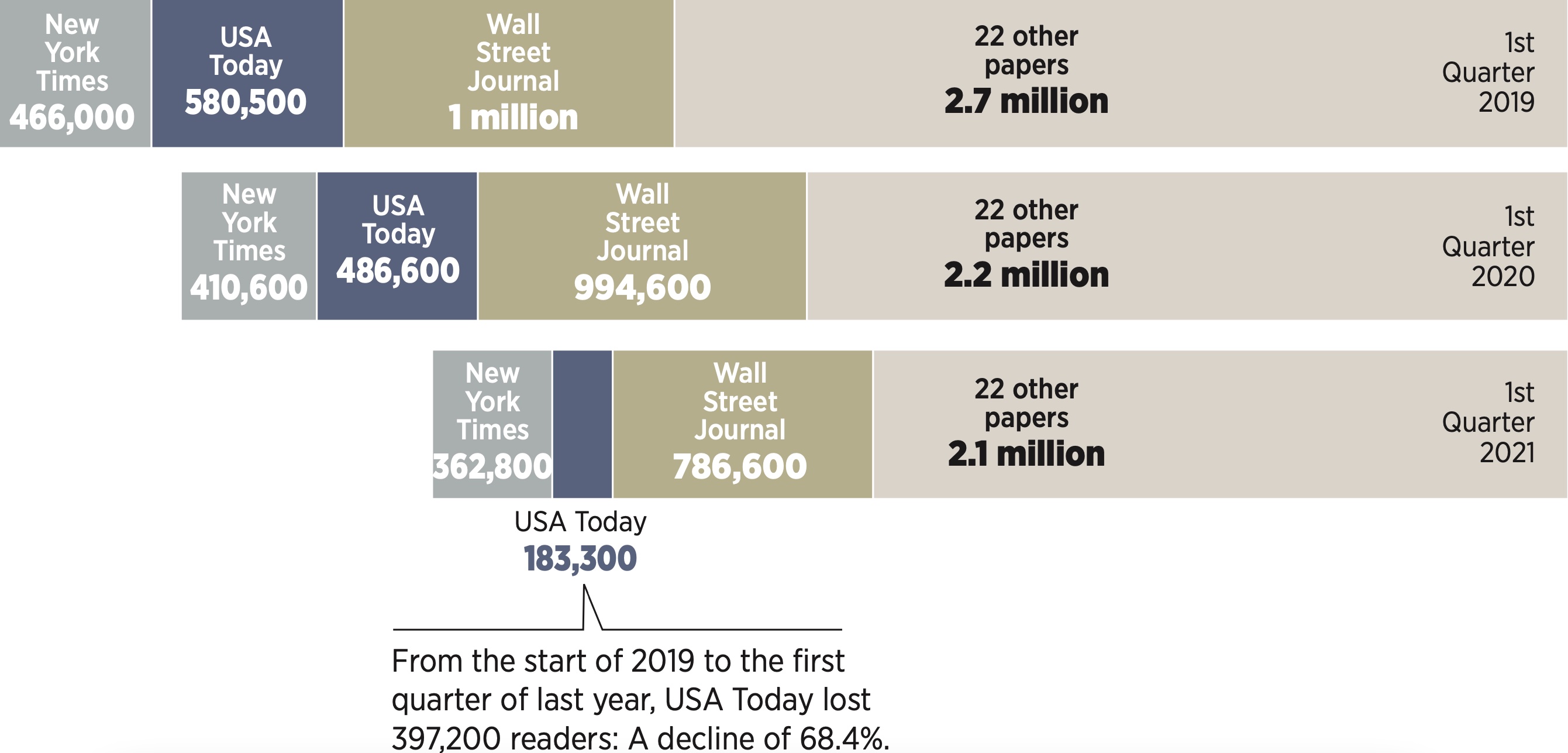
The COVID-19 pandemic accelerated the rate of decline of the newspaper industry. Circulation at the nation’s 25 largest news papers dropped 10.6% over two years. The nation’s three largest newspapers lost more than a half million subscribers over that time.
Many newspapers are trying to offset these losses with paywalls on their web sites to encourage readers to subscribe to their digital editions. Gannett put USA Today behind such a paywall last summer.
The Impact on Local Communities
Local newspapers have been struggling for two decades, and COVID-19 has only exacerbated the problem. More than 100 local newspapers have closed during the pandemic alone. That's left 200 U.S. counties without a local newspaper — and 50 percent of all counties with only one.
Action at the Federal Level
As news and advertising has moved from the printed page to the webpage, tech giants Google and Facebook have reaped the benefits, scooping up ad revenue while squeezing the news outlets that create the content those online platforms rely on.
But two proposals backed by Northwest lawmakers in Congress may offer a solution.
The Local Journalism Sustainability Act, introduced in 2021 by Sen. Maria Cantwell, a Democrat, and GOP Rep. Dan Newhouse of Sunnyside, would use tax credits to let news outlets hire more journalists and help subscribers and advertisers pay for their services. Those measures could offer a temporary lifeline while another bill, the Journalism Competition and Preservation Act, would let news publishers negotiate to get fair compensation for the content they create.
Is There a Solution?
“There’s one obvious lesson to be drawn from the collapse” of the newspaper industry is “that a public service industry can be lost when subjected to overwhelming financial pressures,” writes Radford University journalism professor Bill Kovarik in his textbook, “Revolutions in Communication.”
“At some point, people will pay for the content they love,” continues Kovarik. “But then, what does that say about journalism? The popularity of the profession has gone down, and few people today would see journalists as knights of the press, as they did a century ago. Journalists have always been the gadflies of their communities, and perhaps as unwelcome today as in the days of William Cobbett or Joseph Pulitzer.”
- Some news organizations are already planning for the day when they deliver a digital-only product, with no printed components.
- Some news organizations have looked for new ways of distributing the news. One good example: Several years ago, many papers began what was called a “pivot to video” and concentrated on posting ad-driven video news segments to Facebook. This dropped off after it was revealed Facebook had spread bogus numbers on the effectiveness of those videos. Other organizations invested heavily in tablet-driven delivery.
- Some news organizations have begun exploring ways to become nonprofit organizations. These might be supported by donations from their local communities or businesses, much like public television and radio are today, or from grants.
- Some news organizations have pursued government-subsidized funding.
- Some news organizations are searching for new streams of income, such as holding fashion shows or book club meetings, selling products or offering digital marketing consulting services.
“While the model may be changing, having a sustainable newspaper will take community support, but it also is incumbent on the newspaper to be responsible to its audience.
I am encouraged about our industry’s future when I see newspapers, like The Spokesman-Review, that are deeply engaged with their community. From in-depth coverage of the local arts scene to reporting on national politics from the Spokane perspective, The Spokesman-Review is committed to being part of the community and providing unparalleled news coverage.
With that approach, I am bullish on the future of America’s newspapers.”
Read Charles Apple's full Further Review article, on which this page was based.
